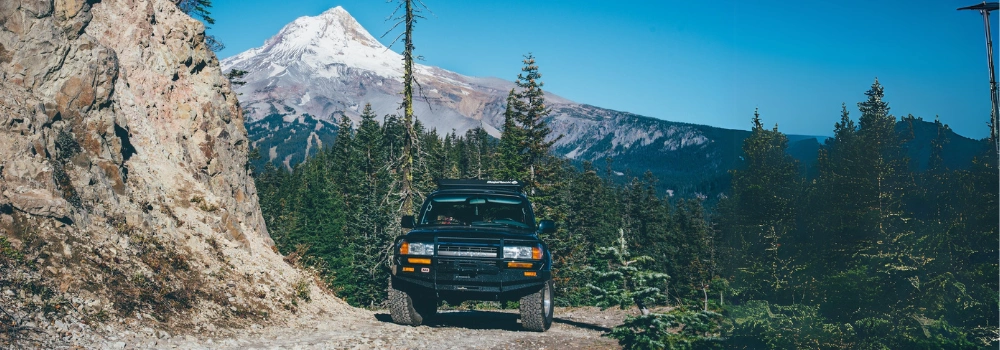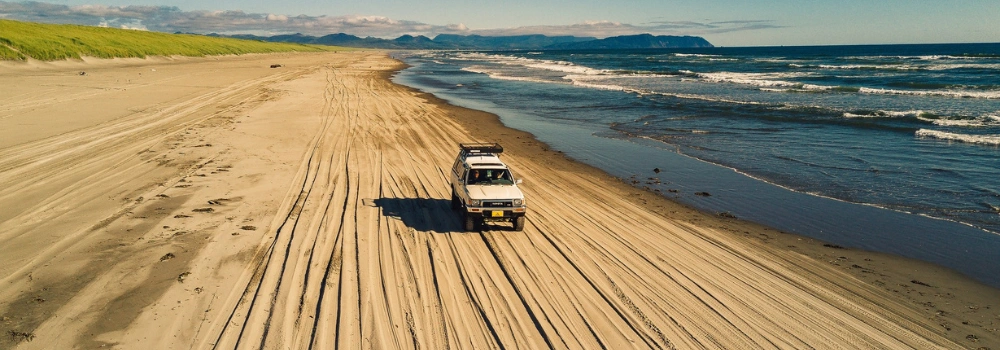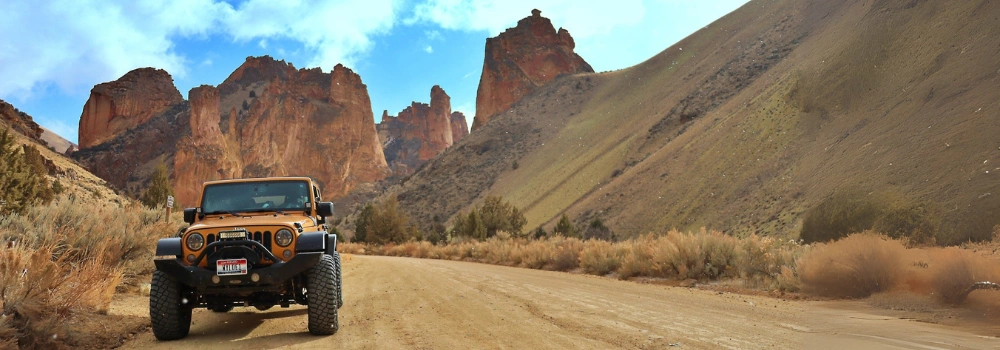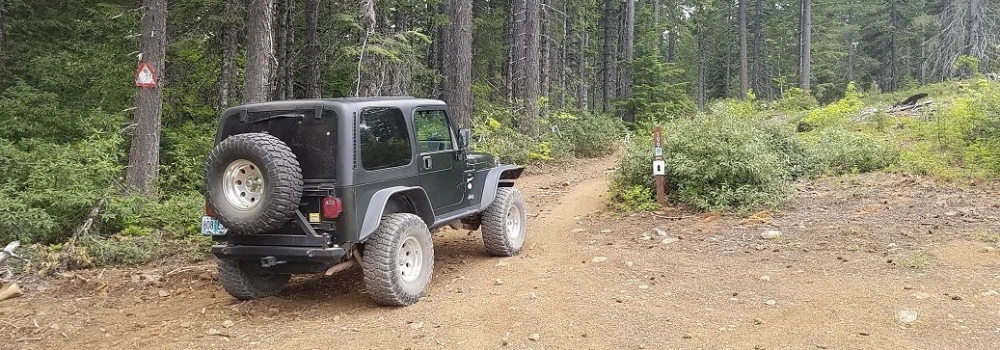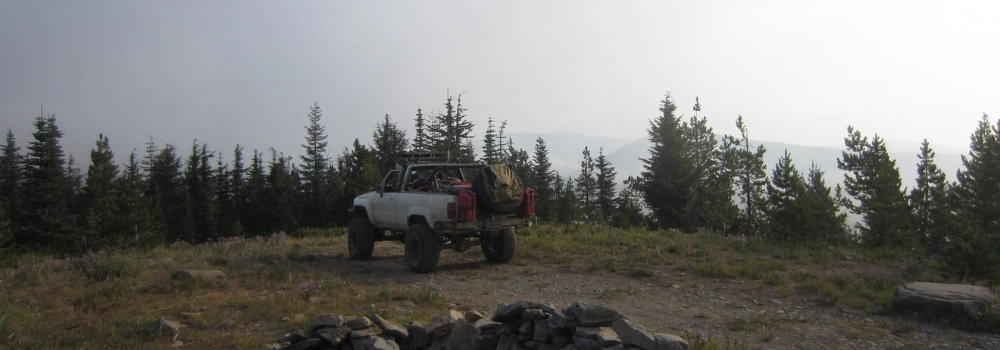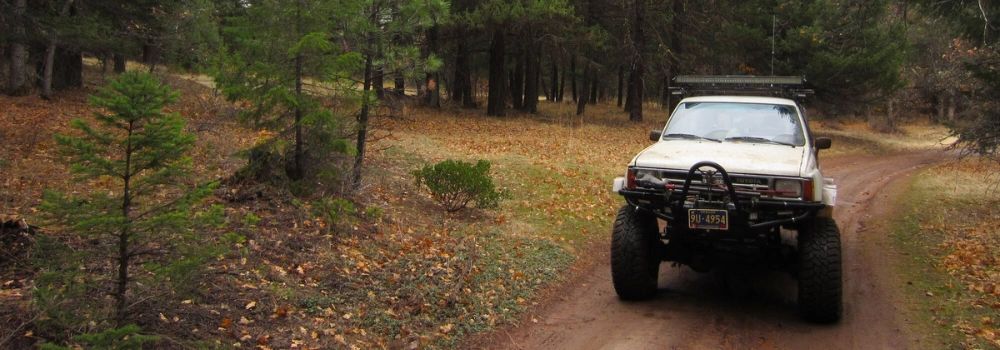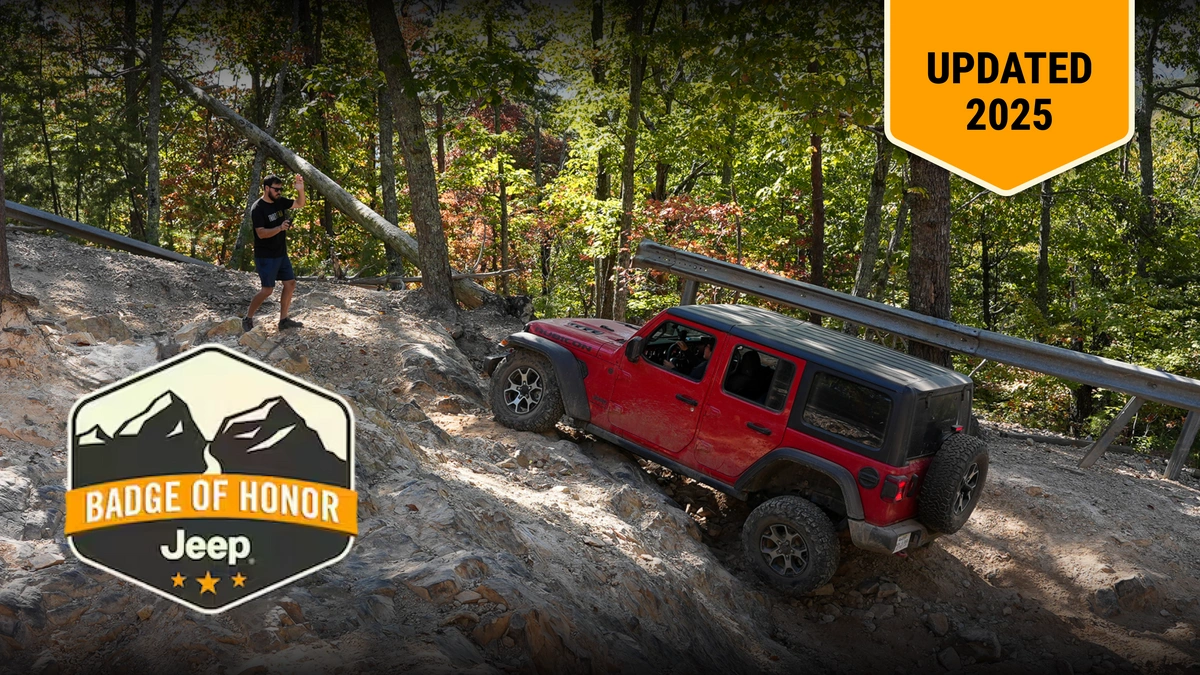
Best Beginner Off-Road Trails in Oregon
Oregon offers a variety of beginner-friendly trails perfect for those new to off-roading or looking for a relaxed adventure. The trails in this guide can all be completed in a 2WD vehicle, with some featuring optional obstacles for those ready to test their skills. Each trail provides a unique experience, from scenic drives through lush forests to historic routes with stunning views.
While we’ve highlighted a few great options here, there’s still so much to explore! If you have a favorite trail you’d like to see mapped or want to share your recommendations, reach out to us—we’d love to have you create trail guides!
Bennett Pass Road - Government Camp
- Length and Duration: 11 miles, taking about 2 hours one-way
- Best Time to Visit: Open April - December
- Vehicle Requirements: 2WD Vehicle with High Clearance
Located in the Mount Hood National Forest, Bennett Pass Road offers breathtaking views of Mount Hood, Mount Adams, and even the Three Sisters on clear days.
Drivers can expect varied terrain, from smooth stretches to ruts and rocky paths, with some sections offering exposure on narrow shelf roads. Seasonal closures start in December and go until April to allow other recreational users to have access to the area.
Gearhart to Warrenton - Gearhart
- Length and Duration: 18 miles, taking about one hour one-way
- Best Time to Visit: Open year round
- Vehicle Requirements: 2WD Vehicle with High Clearance
Stretching along Oregon’s coastline, the Gearhart to Warrenton trail offers a unique opportunity to drive on the beach.
This route passes through scenic recreation sites like Del Ray Beach and Fort Stevens State Park, where you can explore shipwrecks, watch wildlife, and even surf. The hard-packed sand makes for an easy drive, but be cautious of dry, loose sand during warmer months.
Accessible year-round, this trail includes several entry points, providing flexibility for your adventure.
Succor Creek Road - Adrian
- Length and Duration: 35 miles, taking over 3 hours one-way
- Best Time to Visit: Open year round
- Vehicle Requirements: 2WD Vehicle with High Clearance
Succor Creek Road weaves through the diverse landscapes of eastern Oregon, including desert grasslands, dramatic canyons, and agricultural fields.
This scenic, hard-packed dirt road is generally accessible to most vehicles but may become muddy during winter and spring. Pair this trail with Leslie Gulch Road for a full day of exploration. You can also head out and explore the many different side trails as well.
Leslie Gulch Road - Adrian
- Length and Duration: 14 miles, taking about one hour one-way
- Best Time to Visit: Open year round
- Vehicle Requirements: 2WD Vehicle with High Clearance
Known for its striking volcanic rock formations, Leslie Gulch Road is a gateway to stunning geological landscapes.
This trail starts with rolling grasslands and descends into the Leslie Gulch Wilderness Area, where you’ll see huge cliffs tower above you. There are many different activities to do within this area such as hiking, wildlife spotting, or simply taking in the views.
The road is well-maintained, with washboard sections and some seasonal mud, making it manageable for AWD vehicles and beginners.
University Firepower Part 2 / Tillamook State Forest - Banks
- Length and Duration: 1 mile, taking about 25 minutes one-way
- Best Time to Visit: Open year round
- Vehicle Requirements: 2WD Vehicle with High Clearance
University Firepower Part 2 begins as a straightforward gravel road but quickly evolves into a more challenging trail through dense forest.
The trail includes tight turns, optional steep climbs, and intersects gravel roads multiple times. Drivers can choose between a higher, more technical route or an easier bypass, depending on their vehicle and skill level.
During the rainy season, conditions can shift dramatically, making the trail significantly more difficult. It ends at Cedar Tree, another great trail to explore.
Hood River OHV Trail 199 - Hood River
- Length and Duration: Less than a mile, taking about 15 minutes one-way
- Best Time to Visit: Open April - November
- Vehicle Requirements: 2WD Vehicle with High Clearance
Located near Hood River, Trail 199 is a short, narrow path surrounded by thick forest.
This trail offers moderate challenges with ruts and medium-sized rocks, making it ideal for novice off-roaders. A steady uphill climb provides a fun alternative to nearby gravel roads while connecting to more difficult trails.
In winter, rain or snow can make this trail tougher so just keep that in mind. On clear days you may get lucky and see Mt. Hood and the Hood River Valley from nearby roads.
Bonney Butte Road - Government Camp
- Length and Duration: 0.5 miles, taking about 30 minutes one-wa
- Best Time to Visit: Open November - August
- Vehicle Requirements: 2WD Vehicle with High Clearance
Bonney Butte Road offers a short but rewarding drive with stunning panoramic views of Mount Hood, Mount Jefferson, and the Three Sisters.
The trail winds through a dense forest, with some narrow spots that might cause pinstriping for larger vehicles.
Along the trail you can expect to see remnants of a historic fire lookout closed in the 1950’s and interpretive signs about annual raptor migration. It’s important to note that from August - November, this trail is closed to vehicles due to the migration season. However, visitors can hike to the summit for incredible bird watching opportunities.
Bug Road - Tygh Valley
- Length and Duration: 1 mile, taking about an hour one-way
- Best Time to Visit: Open year round
- Vehicle Requirements: 2WD Vehicle with High Clearance
Bug Road provides two distinct experiences depending on the season.
During dry months, it’s a fun and easy connector to the historic Barlow Trail, weaving through forests and open grasslands. When wet, the trail transforms into a muddy challenge with deep water-filled holes that demand more capable rigs.
Hunters and birders frequent the area for its wildlife access, and in spring and fall, the scenery is spectacular.
